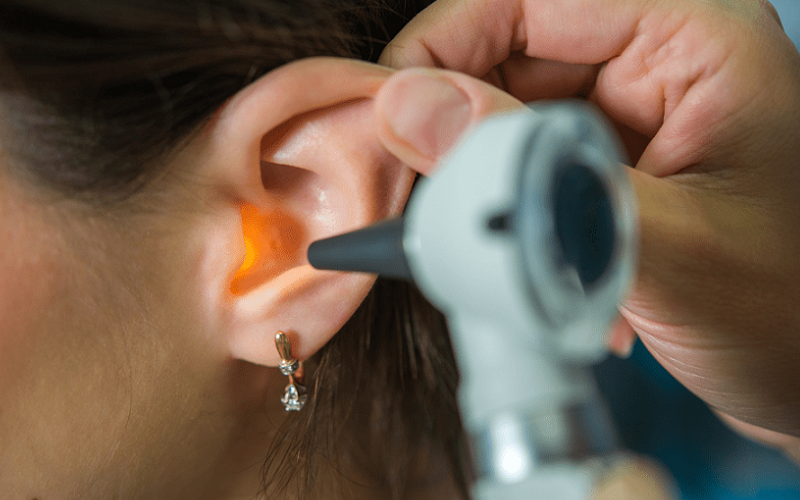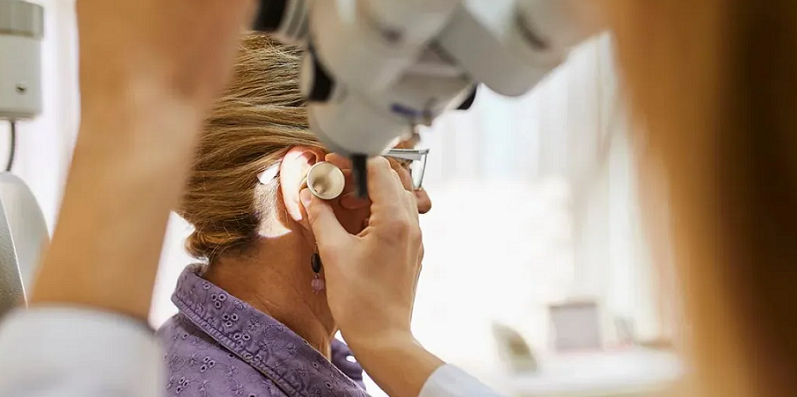
Nootropics have long held the spotlight in the realm of cognitive health, offering promising avenues to enhance brain performance. From popular herbs to synthetic compounds, the search for brain boosters often takes us down expected paths. But what if the key to understanding our brain’s health lay not just in the intricate neural networks but also in something as mundane as our earwax? Surprisingly, recent research has unveiled a curious connection between earwax and neurotransmitters, potentially revolutionizing how we monitor and understand cognitive health.
Contents
Introduction to Earwax and Neurotransmitters
In the intricate dance of neurons and synapses, we often marvel at the human brain’s complexity, seeking to uncover its secrets and optimize its performance. Nootropics, often hailed as ‘smart drugs’ or ‘cognitive enhancers,’ have long held a fascination for those yearning to boost their mental prowess. But as the curtains of scientific discovery are drawn aside, we find ourselves facing an unexpected player on this grand stage: earwax.
Brief Overview of Nootropics
Nootropics have carved out a significant niche in the health and wellness sector, offering a blend of traditional and modern solutions to cognitive challenges.
Definition and Importance of Nootropics
Derived from the Greek words “nous” (mind) and “trepein” (to bend or turn), nootropics are substances that claim to enhance cognitive function, particularly executive functions like memory, creativity, and motivation, in individuals with otherwise normal brain function. Their importance lies in their potential to offer a competitive edge in an increasingly demanding world, aiding everything from academic performance to professional productivity.
Common Nootropics and Their Uses
Over the years, a plethora of substances have been labeled as nootropics. Some are age-old remedies like Gingko Biloba and Bacopa Monnieri, renowned for their memory-enhancing capabilities. Others are modern inventions, such as modafinil and racetams, praised for their wakefulness-promoting and neuroprotective effects. As we navigate through the myriad options, it’s essential to be informed and discerning.
Introducing the Concept: Earwax and Neurotransmitters
While the buzz around nootropics continues, there’s a growing intrigue surrounding unconventional markers of brain health. Earwax, often overlooked or even scorned, has recently been thrust into the limelight for its potential insights into the brain [1].
The Surprising Link
Recent scientific endeavors have revealed that our earwax might hold clues about the levels of certain neurotransmitters in our system. This link, though unexpected, offers an innovative approach to understanding and potentially influencing our cognitive health.
Importance of Studying Unconventional Indicators
In the quest for optimal brain health, it’s vital not to overlook the less obvious markers and indicators. Studying unconventional sources like earwax can unveil hidden patterns, provide non-invasive testing options, and even pave the way for individualized treatment plans. As we move forward, embracing the unusual might just be the key to unlocking unprecedented insights into our brain’s inner workings.

What is Earwax?
As we embark on this journey into the deeper intricacies of brain health, it’s essential first to understand the subject of our unexpected protagonist: earwax. While many of us associate earwax with a substance that needs regular cleaning or removal, this natural secretion plays a much more critical role in our body than we often recognize.
Definition and Composition of Earwax
Earwax, clinically known as cerumen, is not just a random substance that forms in our ears. It’s a complex mixture with specific functions and attributes.
The Role of Cerumen
Cerumen, or earwax, serves as a natural protector for our ears. It keeps the ear canal lubricated, preventing it from becoming dry or itchy. Moreover, it acts as a shield, trapping dirt, dust, and other small particles, preventing them from reaching the eardrum. Its slightly acidic nature even helps prevent infections by inhibiting the growth of certain bacteria and fungi in the ear canal [2].
Different Types of Earwax and Their Meanings
Generally, earwax can be categorized into two types based on its consistency and color: wet and dry. Wet earwax, which is sticky and golden to dark brown, is commonly found in people of African and European descent. On the other hand, dry earwax, which is flaky and gray to tan, is more prevalent among individuals of Asian and Native American descent. The type of earwax one produces is determined by genetics, with specific genes dictating the consistency.
How Earwax is Formed
To truly appreciate the significance of earwax in our discussion on brain health, it’s vital to grasp its origin and formation process.
Glandular Production
Earwax is produced by ceruminous glands located in the outer third of our ear canal. These specialized sweat glands secrete a mixture that combines with sebum (from sebaceous glands) and dead skin cells. As the secretion moves towards the opening of the ear, it picks up debris, hair, and dead cells, evolving into the substance we recognize as earwax.
Factors Affecting Earwax Consistency and Amount
Various factors can influence the consistency and quantity of the earwax we produce. Age plays a role, with infants and older adults generally producing softer wax. Diet, environment, and overall health can also affect earwax production. For instance, individuals with high-stress levels or anxiety might produce more earwax due to increased activity of the ceruminous glands. Additionally, certain medical conditions or medications can lead to changes in earwax production and consistency.
Introduction to Neurotransmitters
Transitioning from the enigmatic world of earwax, let’s now pivot to a topic more conventionally associated with cognitive function: neurotransmitters. These powerful chemical messengers play an indispensable role in the orchestration of our brain’s vast activities, from the simplicity of blinking to the complexity of abstract thought.
Definition and Importance of Neurotransmitters
Neurotransmitters are the brain’s way of ensuring communication between its myriad of neurons, allowing for the efficient relay of information and instructions.
Role in Cognitive Functions
Neurotransmitters function as the messengers of the nervous system. When a neuron receives a signal, it releases a neurotransmitter into the synaptic cleft (the gap between neurons). This neurotransmitter binds to receptors on the adjacent neuron, facilitating the transmission of the signal. This complex relay system underpins all our cognitive processes, emotions, and actions. Every thought we conceive, every emotion we feel, and every move we make is a result of neurotransmitter activity [3].
Different Types of Neurotransmitters and Their Functions
The brain employs a diverse set of neurotransmitters, each with its unique role and function. Some of the most well-known include:
- Serotonin: Often associated with mood regulation, serotonin plays a crucial role in feelings of well-being and happiness.
- Dopamine: Tied to pleasure and reward systems in the brain, dopamine influences motivation, pleasure, and motor control.
- Acetylcholine: Integral for memory and learning processes, acetylcholine also plays a role in muscle contraction.
- Gamma-Aminobutyric Acid (GABA): As the primary inhibitory neurotransmitter, GABA helps regulate neuronal excitability, promoting calm and reducing anxiety.
How Neurotransmitters Affect Brain Health
Delving deeper, it’s clear that neurotransmitters aren’t just about relaying messages. They significantly influence the overall health and functionality of our brains.
Mood Regulation
Our emotional well-being and mood are intrinsically tied to neurotransmitter levels and activity. Imbalances, whether an overproduction or deficiency, can lead to mood disorders. For instance, decreased levels of serotonin are linked to conditions like depression.
Cognitive Performance and Memory
Neurotransmitters play a fundamental role in our cognitive faculties. Acetylcholine, for instance, is crucial for memory formation. A decline in its production or activity can lead to memory-related issues and has been associated with conditions like Alzheimer’s disease. Similarly, dopamine, in its role governing the reward system, influences our motivation and drive, impacting our overall cognitive performance.

The Unlikely Connection: Earwax and Neurotransmitters
Having explored the realms of both earwax and neurotransmitters, it’s time to bridge these seemingly disparate domains. At a first glance, the secretions in our ears and the chemical messengers of our brains seem worlds apart. However, as is often the case in the realm of science, closer inspection reveals surprising connections that could have profound implications for our understanding of brain health.
Recent Research and Findings on Earwax and Neurotransmitters
The burgeoning field of biometric research has opened up avenues for exploring unconventional sources of health information, and earwax has emerged as a fascinating candidate.
Earwax as a Biomarker
Research has begun to uncover that our earwax might hold more than just remnants of our environment. It appears to contain traces of various chemicals our bodies produce, including neurotransmitters. Given that it accumulates over time, earwax might offer a chronological snapshot of our biochemical state, potentially revealing patterns or changes in neurotransmitter levels [4].
Detecting Neurotransmitter Levels in Earwax
Recent studies have employed advanced analytical techniques, like mass spectrometry, to detect and quantify neurotransmitter concentrations in earwax samples. Preliminary findings suggest that there might be a correlation between the levels of certain neurotransmitters found in earwax and those in the brain. This holds the potential to provide a non-invasive method for gauging brain health, by measuring these crucial chemical messengers without the need for more invasive procedures.
Earwax and Neurotransmitters Implications for Nootropic Users
For enthusiasts and users of nootropics, these findings might open up a brave new world of possibilities for understanding and optimizing brain health.
Monitoring Brain Health and Performance
If neurotransmitter levels in earwax indeed mirror those in the brain, regular sampling could offer users a way to monitor the effects of different nootropics on their neurotransmitter balance. This would allow for a more informed approach to selecting and dosing these cognitive enhancers, maximizing benefits and minimizing potential side effects.
Potential for Personalized Nootropic Recommendations
The world of personalized medicine is rapidly expanding, with treatments tailored to individuals’ unique biochemistry becoming the gold standard. If we can reliably assess brain health through earwax analysis, it may pave the way for bespoke nootropic regimens tailored to individual neurotransmitter profiles, ushering in an era of truly personalized cognitive enhancement.
Benefits of Understanding The Earwax and Neurotransmitters Duo
As we immerse ourselves in the unexpected interplay between earwax and neurotransmitters, it’s worth pondering the broader implications of this discovery. Why should we care about this unlikely pair? What can this relationship reveal about our overall health and well-being? As it turns out, understanding the connection between earwax and neurotransmitters offers a multitude of advantages, both for the scientific community and for individuals striving for peak cognitive performance.
Non-Invasive Health Monitoring
One of the most groundbreaking benefits of this discovery is the potential for non-invasive health assessments.
Safer and Simpler Assessments
Traditional methods of assessing neurotransmitter levels can be invasive and sometimes uncomfortable. For example, spinal taps or lumbar punctures, which involve collecting cerebrospinal fluid, can be both painful and risky. Comparatively, collecting earwax is a simple, pain-free procedure that poses no health risks, making it a far more appealing option for routine monitoring [5].
Regular and Real-Time Monitoring
Given the ease of earwax collection, it becomes feasible to conduct regular checks. This allows for real-time monitoring of neurotransmitter levels, making it easier to detect sudden changes or shifts that could indicate underlying health issues.
Personalized Health Insights
The earwax-neurotransmitter relationship can pave the way for more personalized health insights, catering to individual needs and profiles.
Tailored Health Interventions
Understanding neurotransmitter levels can guide personalized interventions, whether they involve tweaking the doses of nootropics or suggesting other lifestyle changes. For instance, if someone’s earwax indicates a drop in serotonin levels, interventions could focus on boosting mood and addressing potential underlying causes.
Individual Baselines for Better Comparisons
Everyone’s “normal” is different. By regularly analyzing earwax, individuals can establish their unique baseline for neurotransmitter levels. This makes it easier to detect deviations from their norm, providing more accurate insights than generic benchmarks might.
Broader Research Opportunities
Beyond personal benefits, the link between earwax and neurotransmitters can also open up vast research opportunities.
New Avenues in Neurological Research
This novel method of assessing neurotransmitter levels can provide researchers with a more accessible means of studying various neurological conditions, from mood disorders to neurodegenerative diseases. It can significantly expedite research, as larger sample sizes become more feasible given the non-invasive nature of earwax collection.
Potential for Early Disease Detection
Given that neurotransmitter imbalances can precede the onset of overt symptoms in various conditions, earwax analysis might offer a way to detect diseases in their early stages, enabling timely interventions and potentially better outcomes.
References
[1] Measuring Earwax Cortisol Concentration using a non-stressful sampling method
[2] Earwax test could reveal stress levels
[3] Good Ear Care May Be Good for Your Brain
[4] Scientists hail earwax test for checking stress hormone levels
[5] Earwax may reveal how stressed you are

